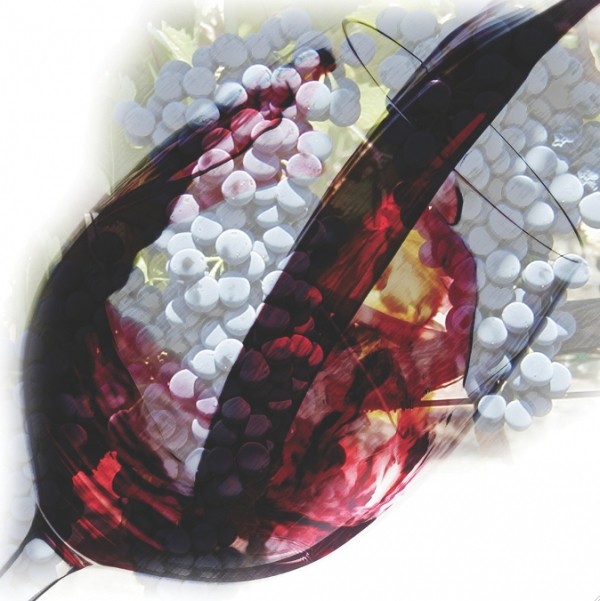On Nov. 7, we published the first of two Drink columns about getting back to the basics of wine varieties—or, as they’re commonly called in winespeak, varietals. That is, the specific type of grape or grapes being used to make wine.
As I mentioned, there are some 24,000 different wine grape names used around the world, with only about 150 being commercially important. Of those, a mere half-dozen dominate wine sales worldwide.
The “big six” grape varieties consists of three red wine grapes and three whites. We covered the white varietals in Part 1: Chardonnay, Sauvignon Blanc and Riesling. This week, we’ll get to know the ubiquitous trio of red varietals in the wine world: Cabernet Sauvignon, Merlot and Pinot Noir.
Bottles of wine produced in this country typically carry the dominant grape name on the label. So, when you buy something called Cabernet Sauvignon or Pinot Noir, you know that the wine in the bottle is made primarily of those grapes. In other countries—France, in particular—things are a bit trickier. Cabernet Sauvignon and Merlot are commonly used in France to make red Bordeaux wine, but it’s called Bordeaux, not Merlot or Cabernet Sauvignon. Ditto with Pinot Noir—within France, it’s usually labeled Burgundy or Bourgogne.
Cabernet Sauvignon: This grape is quite versatile and does well in all but very cool climates. Hence, it’s grown in most wine regions of the world, from Chile and France to Australia, South Africa and California. The most common flavors and aromas found in Cabernet Sauvignon are cassis, blackberry and blackcurrant. It tends to be a fairly tannic wine—the stuff in wine that makes your mouth pucker. Cabernet runs the gamut from cheap and modest, with little fruit, to spectacular oak-fermented wines that can improve with age for 15 years or more. There’s probably no single wine varietal that can offer so much satisfaction right along with so much disappointment; it ranges widely in quality.
Merlot: If you know anything about wine, you probably know that merlot got a really bad rap in the movie Sideways. Suddenly, Merlot became very uncool, thanks to the wine-snob protagonist’s disdain for the stuff. Fine, that leaves more for me. Merlot tends to be relatively low in alcohol and tannins, but full in body and deeply colored, so what’s not to like? Plum and mocha/chocolate flavors are typical, and Merlot is used as a secondary blending grape (to Cabernet Sauvignon) for making French Bordeaux. Because of its lower tannins, Merlot tends to be more approachable than, say, Cabernet Sauvignon—hence the bum rap it received in Sideways. Lest you think merlot is merely a “training wheels” wine varietal, go pick up a bottle of Château Petrus, which is made with 95 percent Merlot and 5 percent Cabernet Franc. Just be aware: The current 2009 vintage, which should be really good in a couple decades, will run you about $3,000 per bottle.
Pinot Noir: This is one of the more finicky and challenging red wine grapes to grow. Hence, good Pinot is pricey. The best comes from France in the form of red Burgundy. But there’s also excellent Pinot Noir made in Oregon, California and Washington. Pinot Noir is usually earthy, with flavors of baked cherries and plums. It’s soft and silky—lighter in body and tannins than Cabernet—and a classic partner for mushroom and duck dishes. Blended with Chardonnay, Pinot Noir is also a key component of most Champagne.
More by Ted Scheffler
-
Flavor on the Western Front
Nomad Eatery ups the ante for off-airport eats.
- Dec 13, 2017
-
Under the Christmas Tree
Holiday gifts for cooks, foodies and winos
- Dec 6, 2017
-
Spreading the Love
Amour Café creates simple yet scrumptious fare.
- Nov 29, 2017
- More »





